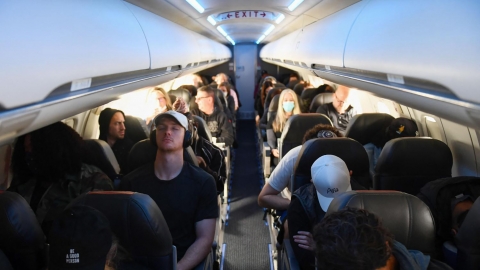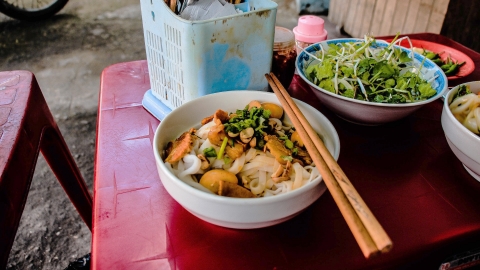Drive-thru (also known asdrive-through, driving through) is a business method in which cars will follow each other in a line through a window, the store staff communicate with customers via microphone. All product transactions such as ordering, receiving goods and then paying are done while the customer is still sitting in the car. This is a familiar and typical form of North American countries, especially the United States.
The drive-thru model began to appear in the mid-20th century and flourished in the 1970s, mainly selling fast food (fast food) like hamburgers and fries. Mexican-American food chains—like Taco Bell and Taco Cabana—also widely adopted this model.
The combination of “two worlds”
During the early days of the Covid-19 pandemic, drive-thru dining exploded across the United States, as most restaurants imposed social distancing rules and suspended in-person service. Since then, many Vietnamese Americans have embraced the idea of combining Vietnamese cuisine with this unique sales model.
Hughie's on West 18th Street is one of the few Vietnamese-American owned restaurants in Houston, Texas. It was originally a Dairy Queen fast food outlet; in addition to banh mi and shaking beef, Hughie's menu still includes Dairy Queen's famous apricot marinated chicken.
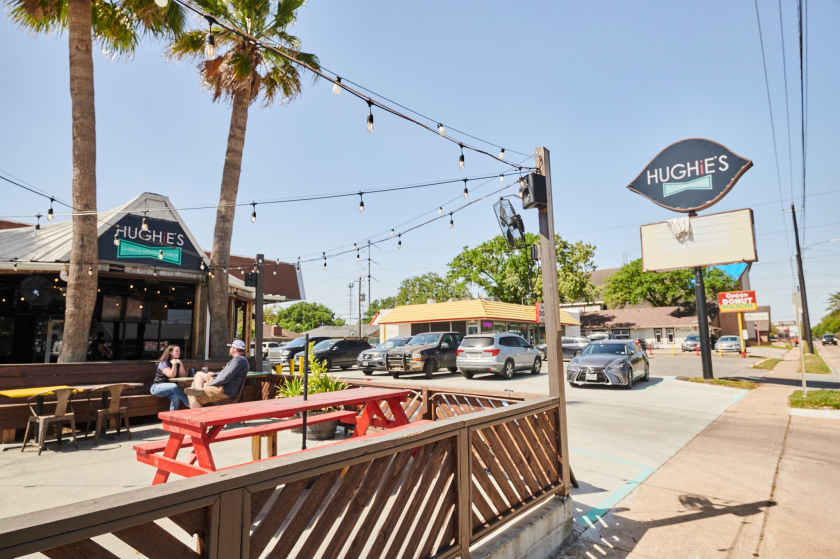
Hughie's location was originally a Dairy Queen restaurant. Hughie's launched the drive-thru model in March 2020.

The main Vietnamese dish sold here is the traditional Vietnamese sandwich. Photo: Amy Scott/NYT
Paul Pham, owner of two Hughie locations in Houston, said he will open a third drive-thru location next year, and he plans to expand across Texas and beyond.
In Paul Pham's eyes, the drive-thru is a creative innovation that combines the fast food industry with America's "car culture"; and now it's a potential vehicle to bring Vietnamese food into that success story.
At the same time, modeling Hughie after American fast food chains was not only to attract more customers, but also to recount memories of his years growing up in Houston.
“Drive-thru and Vietnamese food, the combination of both worlds like that reflects who I am. If I did it differently, in any way, it would lose the authentic feeling,” Paul said.
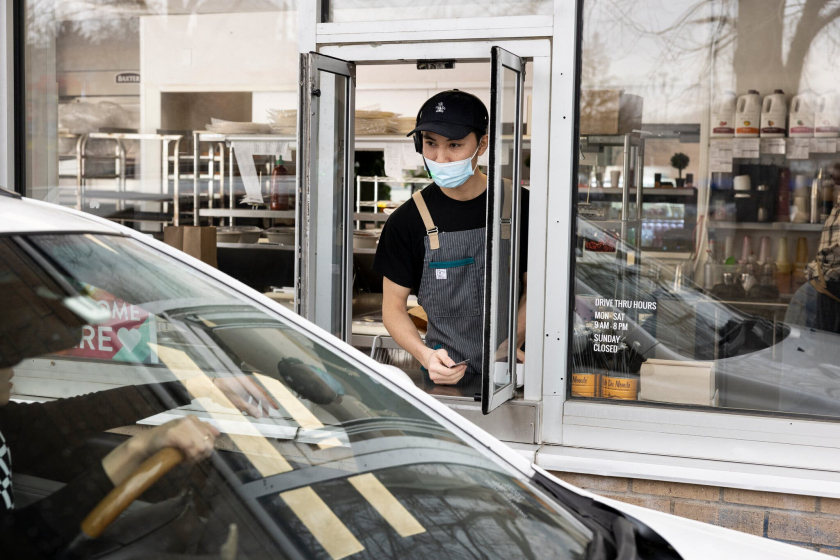
Delivering bread through the car window
A new way to promote Vietnamese cuisine
“We are evolving the Chick-fil-A way.(an American fast food chain whose specialty is chicken sandwiches). They are veterans of this business model,” Paul Pham shared. That means he wants to use technology to effectively manage customer service, open branches in densely populated areas and close on Sundays – a rarity for long-standing Vietnamese restaurants in Houston. “Such a model would not survive in a traditional Asian environment,” he added.
Paul Pham was born and raised in Houston, Texas. According to the 2020 US census, there are currently about 2.1 million Vietnamese Americans living in this country. Of these, 150,000 are in Texas. This is also one of the localities with the largest Vietnamese communities in the United States.
Perhaps that’s why in recent years, a series of Vietnamese restaurants with similar concepts have appeared in Houston, such as Oui Banh Mi, Saigon Hustle, and Kim’s Pho & Grill. Outside of Texas, there’s Simply Vietnam in Santa Rosa, California, or Mi-Sant Banh Mi in Brooklyn Park, Minnesota – all of which have drive-thru counters. At the same time, more and more Vietnamese food stores are opening in North American cities, such as Philadelphia, Washington, and San Jose, California. Through this typical convenience food model, they want to expand their customer base and introduce Vietnamese cuisine to more people.

Outside the Saigon Hustle store. Photo: Annie Mulligan/NYT
Like Paul Pham, Cassie Ghaffar also intends to expand her business. At the end of February 2021, she and business partner Sandy Nguyen opened Saigon Hustle restaurant in Houston's Oak Forest neighborhood.
Cassie shared: “For many non-Vietnamese diners, traveling all the way to Chinatown to find a Vietnamese restaurant is inconvenient, because many places do not have menus written in English. And high-end Vietnamese restaurants are very expensive. Combining the drive-thru model will make it easier and help more people have the opportunity to enjoy Vietnamese cuisine.”
Her restaurant, which serves Vietnamese staples like banh mi, vermicelli noodles, and rice, looks a lot like a 1950s drive-in, with a large awning decorated with dragon fruit and ample parking. The single location is on track to generate $1.8 million in revenue this year, and Cassie Ghaffar and Sandy Nguyen plan to expand across the United States in the next two to three years.
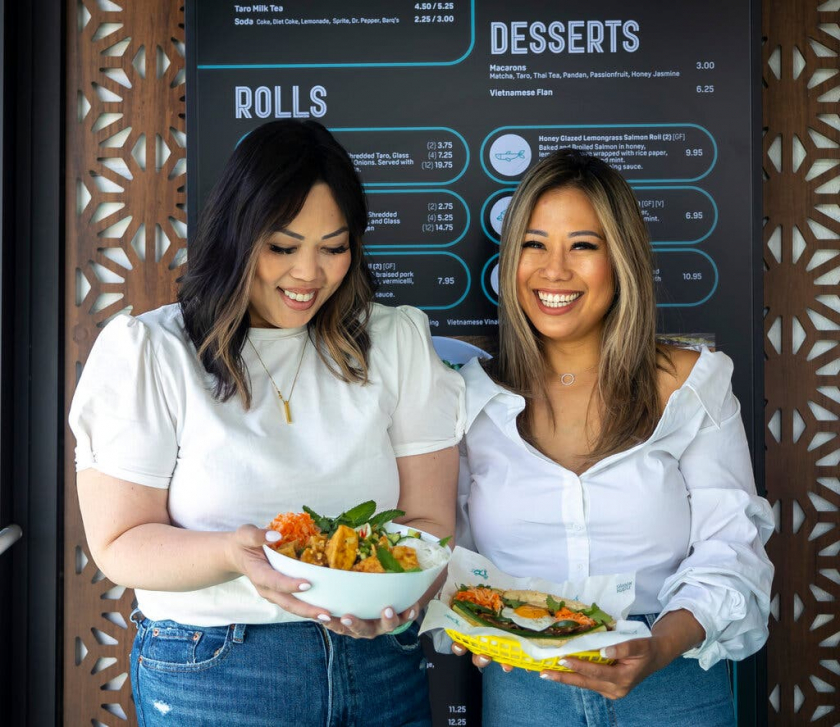
Cassie Ghaffar (left) and Sandy Nguyen (right) run the drive-thru restaurant Saigon Hustle. Photo: Annie Mulligan/NYT
Meanwhile, in neighboring Canada, the story of the Vietnamese sandwich drive-thru is a little different. Kenny To and Hien Nguyen, owners of To Me Vietnamese Sub in Calgary, did not start their journey to bring Vietnamese cuisine into the fast food industry because of the pandemic. They were inspired by Tim Hortons - a Canadian icon.
Mr. Kenny, now 60 years old, shared: “Every morning I have to drink coffee at the Tim Hortons drive-thru. Because it is so convenient, my daily life cannot be without it. And so I thought, why not apply this method to sell Vietnamese food?”
To Me Vietnamese Sub, which opened in October 2022, mainly sells sandwiches and spring rolls. Kenny said these dishes are easy to pack and take away, making them well suited to drive-thru. However, his shop makes sandwiches to order and only prepares them after customers order, so they are still not as quick as hamburgers and fries.
“First we bake the crust, and the meat has to be prepared carefully to get the right taste,” he said. “Sometimes, customers have to wait up to 30 minutes.”
Can bread be developed using the drive-thru model?
Despite the many difficulties in sourcing ingredients, there is one Vietnamese restaurant that has successfully expanded across the United States: Lee's Sandwiches. This restaurant first opened in 1983, owned by Ba Le and Hanh Nguyen. Today, there are 62 branches of Lee's Sandwiches brand across 8 states in the United States, including large states such as California, Nevada, Oklahoma and Texas. Some of these branches have also started implementing drive-thru model.
Jimmy is happy to see the new Vietnamese drive-thrus open, but he has no plans to go any further with the concept. “We won’t change too much, preferably nothing at all,” he says. “I don’t want to turn our brand into an American fast food chain.”
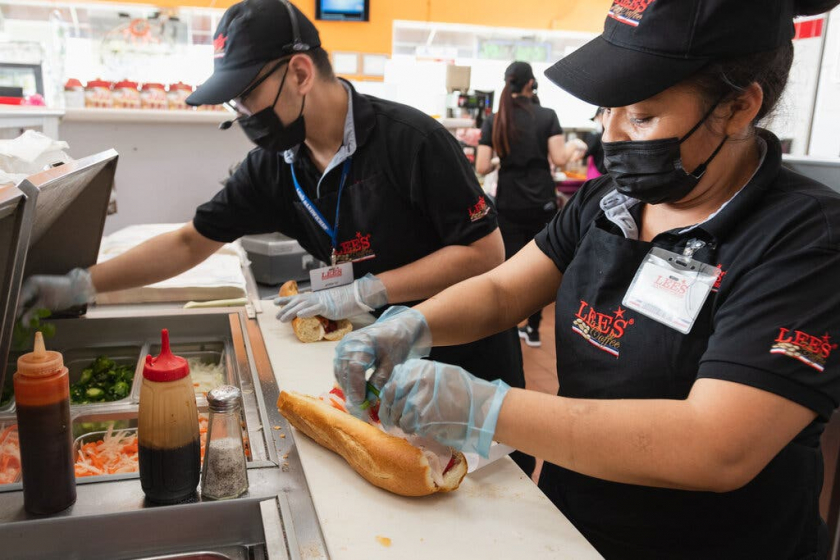
Inside a Lee's Sandwiches drive-thru. Photo: Andrew Cullen/NYT
Not very enthusiastic about the idea of selling Vietnamese food via drive-thru, Mai Nguyen - a veteran Vietnamese-American restaurant owner - commented: "I see that the current generation builds very beautiful and modern restaurants, but the cuisine is not authentic."
In fact, everyone’s definition of “authentic” is different. At Mi-Sant Banh Mi, a Vietnamese restaurant in suburban Minneapolis, “authentic” includes not only the traditional Vietnamese sandwich but also the restaurant owner Quoc Le’s famous croissants. Quoc Le, who was trained as a pastry chef in France by his father, decided to renovate an old KFC drive-thru to create the new location for Mi-Sant.
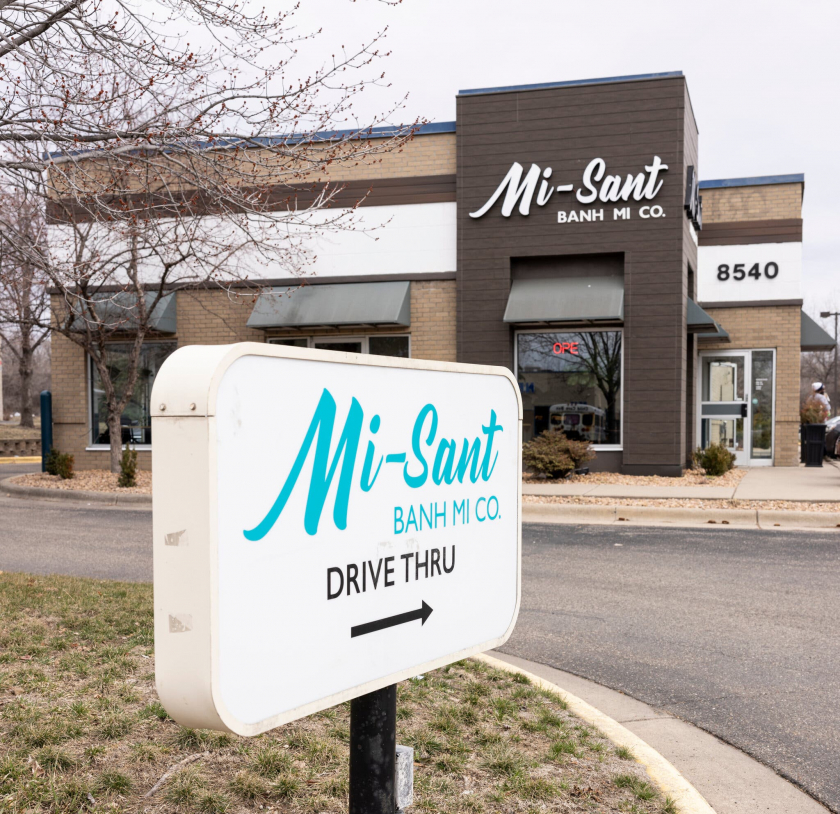
Mi-Sant restaurant wants to be a more upscale version of Shake Shack. Photo: Jenn Ackerman/NYT
“This is part of our identity,” said Linh Nguyen, co-owner of Mi-Sant. “We grew up here for many years and are familiar with this form of sales, so it doesn’t seem strange to us.”
Linh Nguyen wants to open another Mi-Sant Banh Mi location in the area, but she also admits that reaching a wider customer base this way could alienate Vietnamese customers.
“Not all the staff can speak Vietnamese, the menu is not in Vietnamese, and our prices are a bit higher than those of traditional, long-standing restaurants. In addition, many people are still not used to buying banh mi at the drive-thru. Once they ordered a hamburger and a taco, I had to tell them that we only serve Vietnamese food,” Linh Nguyen recalled.
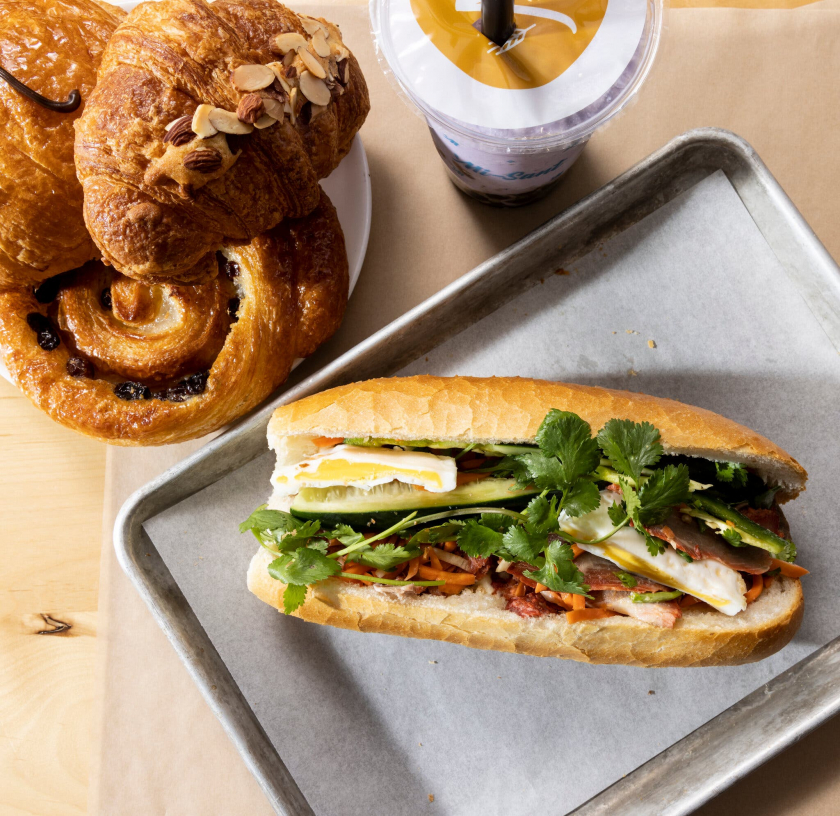
Mi-Sant's signature dishes are Vietnamese sandwiches and Quoc Le's croissants. Photo: Jenn Ackerman/NYT
Whether this drive-thru model will thrive and truly become a tool to promote Vietnamese cuisine remains an open question. The convenient and fast way of selling certainly brings a completely different experience compared to traditional restaurants, but at present, it is clear that not everyone welcomes this idea.- The New York Times newspaper commented.























